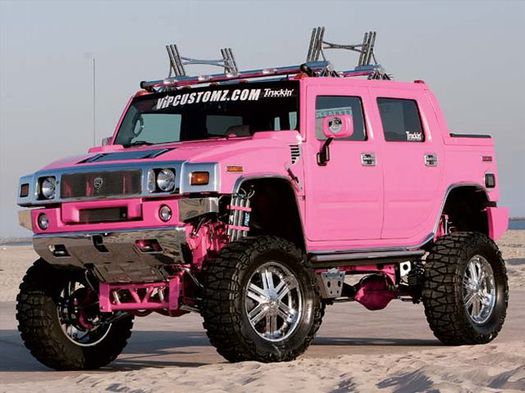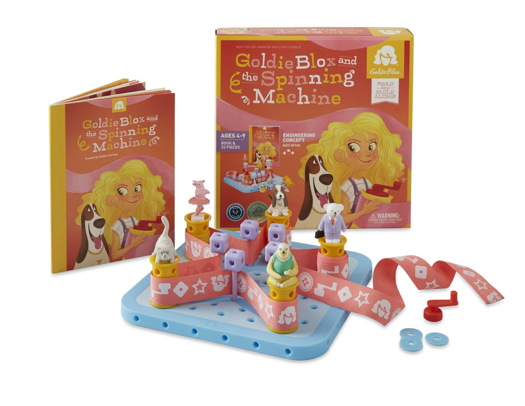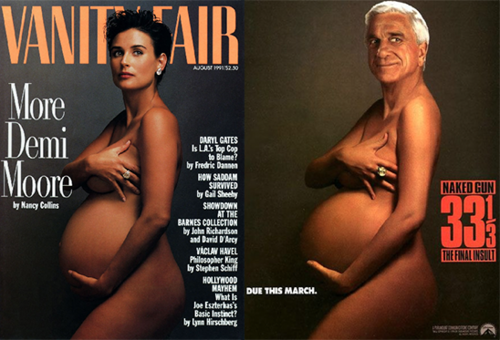
image: truckinweb.com
Oh boy, it's gettin' real in the Goldieblox vs Beastie Boys media arena.
Felix Salmon has an awesome column on Goldieblox, not as an empowering girl toy pioneer, but as an archetypal disruption-obsessed Silicon Valley startup.:
Under what Paul Carr has diagnosed as the rules of the Cult of Disruption, GoldieBlox neither sought nor received permission to create these videos: it never licensed the music it used from the artists who wrote it. That wouldn't be the Silicon Valley way. First you make your own rules -- and then, if anybody tries to slap you down, you don't apologize, you fight. For your right. To parody.Obviously, I'd link to it for that last line alone.
I believe that the Cult of Disruption is douchey and dickish and other distateful d-words that apply to so much Valley and net culture. [It's not new, though. Back in the late 90s I remember an investor showing me some web consultant's deck with a big piece of explosive clip art that promised to help them "DRIVE A HUMMER THROUGH YOUR INDUSTRY."]
And basically, it's complicated. I happen to agree with Felix that Goldieblox was ready to pick a very public legal fight "the minute anybody from the Beastie Boys, or their record label, so much as inquired about what was going on." And though I think it's also a gold-plated media and PR play, too, I agree that the real [sic] target of the lawsuit is Silicon Valley investors, who only want to invest in "a fast-growing, Stanford-incubated, web-native, viral, aggressive, disruptive company with massive room for future growth," not just a toy company for girls.
But this is a confluence of issues I have been following very closely for years now, and I also believe that Goldieblox has the right to make their version of the Beastie Boys' song, and they don't need to ask permission to do it. That's the essence of fair use and transformative use and creating new culture. Copyright law has been skewed for decades now toward maximalism and corporate interests. Fair use statues are ambiguous and risky and even in the most clear-cut cases, are basically just an open request to get sued. Which most artists or creators don't want or can't afford. So they cave, or run, or don't create, and corporate copyright interests march on unimpeded.

And Felix also mentions something I suspected, but felt it was impolite to say when their commercial was so awesome: the Goldieblox toys and books don't look that good. Amanda Clayman she totally nails this:
We should be careful (or at least aware) of when our frustrations and aspirations are being co-opted for the aim of selling a product. Not that I'm saying GoldieBlox has some evil agenda. But they are not in the business of creating girl-power content. They are in the business of selling toys. Girl-power content is just a means to that end.And guess what, the toys are kind of boring and lame.
So as a creator of things and champion of expansive fair use, I wish Goldieblox well as they fight. for their right. to parody. They are our generation's copyfighters, our Larry Flynt. As a parent, though, I'm not buying it.
Goldieblox, fair use, and the Cult of Disruption [blog.reuters.com]
I hate to be the feminist grinch here... [mandaclay]
OH LOOK, THIS LEGO STARTER SET COSTS THE SAME AS GOLDIEBLOX. OOH, LEGO X MINECRAFT? [amazon]
UPDATE: And now Andy Baio's post is up, Goldieblox and the Three MCs. Baio knows his way around a startup and an annoying fair use fight. Baio hits on the myths and open issues of copyright infringement and fair use, including a case that's highly relevant here, where Annie Liebovitz sued Paramount for a parody advertisement of The Naked Gun. Which I include here because, obviously, I must.
UPDATE UPDATE: Stop the insanity, they've pulled the video! And they published an open letter to the Beastie Boys in response to the Beastie Boys' open letter and the whole thing's like, Oh no, we're poorly positioned for going into Thanksgiving Day conversations about our brand, we need to change it up a bit so the punchline isn't always "and their products turn out not to be that interesting!" [via onthemedia.org]




Also, after including lyrics in the song about how all girls' toys are pink. They made the damn things pink and pastel.
My daughter got the spinning machine toy you pictured for her birthday this summer. Played with it once and then it sat on the shelf. After being inspired by the viral video, I pulled the thing out again and tried to engage the kids in some creative engineering fun. Didn't happen. The toy kind of sucks. It comes with a book that tries to supply directions and teach in verse. Doesn't work. Hard to follow. Very little to learn. It amounts to a lot of plastic and wasted packaging to teach two fairly basic principles that could be taught with a top (more fun) and a clothesline (more useful, although I don't think 'Goldie Blox Does the Laundry' is the angle they're going for). Must most disappointing is that there's so little room for creativity. You do the prescribed project. Then maybe one or two variations on the theme. And then you're bored and your kids would love to do something cool with all those pretty pieces but you just can't. Kids (girls and boys) would be better served by actual blocks than by Goldie Blox.
RIGHT??
Nice to be reminded of the best thing about NG 33 1/3.
Also, Baio nailed it with "Goldieblox founder and CEO Debra Sterling, despite her Stanford engineering background, spent seven years as a brand strategist and marketing director before starting Goldieblox." This explains all that is disappointing about the toy The marketing materials play up her engineering background. But the toy is really more concept than substance.
http://waxy.org/2013/11/goldieblox_and_the_three_mcs/
A comment by Ted Rheingold from Andy's post:
"IMO, brand respect is earned, not legally co-opted."
I don't think the Beastie Boys and Adam Yauch's memory need to be coddled here, but that doesn't mean that the GB legal strategy isn't a dick move. [Figuratively speaking, obv.] I can't help thinking that's going to have some impact on GB as a brand. I guess we'll see. Maybe it's exactly the kind of thing the Beastie Boys would do today if they were starting a girls' toy company.
Oh, and here's Matt Haughey, who backed the GB Kickstarter and was seriously underwhelmed, along with his 7yo daughter, by the resulting toy/book:
"Someone involved in the project is really good at PR and marketing, because it overpromised and underdelivered."
Not to mention the super cute blonde, Caucasian beauty that is their mascot. I mean, I know it's supposed to be Goldielocks, but still. She's no different than a Disney Princess, aka The Oppressor.
I have mixed feelings about the toys--the original illustration from the Kickstarter was not nearly as polished and mass market as the updated version shown in the photo. No question there is a marketing element here--the founder was very plain about rebranding the character drawings to facilitate things like TV shows, etc.
Having said that, I have bought both of the sets currently available as well as the bits and pieces add on--because I am continually irritated by the increasing gender stratification of toy marketing.
My daughter (2.5) has blocks, and Legos, and Bristleblocks, and Tinkertoys, and Lincoln Logs--and she will continue to have all of those types of things along with dolls or whatever else she is interested in. And as long as we only shop the (excellent but often more expensive) independent toy stores she will see a more general "toy" message.
BUT every time we are in Target, or Walmart, or Toys R Us it is totally clear which toy aisles are "supposed" to be for her. And that really bothers me even though we don't present it to her that way and actively encourage her to look multiple places. The mass market norm and the industrial princess complex seem innocent enough on the surface, but to me it smacks a little of those old arguments from the 50s and 60s that women only wanted to be secretaries and teachers. If there's only certain items and concepts being presented as acceptable, what is the overall message? Why can't toys just be toys?
So for me, even though the quality isn't a patch on Legos (but who can compete there?) I still think GB is playing an important and overdue role--for me, it has the potential to be a gateway drug or such. People who might not buy an Erector set for a girl might buy a GB toy instead--and then that girl might WANT an Erector set on the next go-round.
Little girls whose moms aren't engineers/scientists/mathematicians/etc. may not get to see the possibilities that exist for them--not because anyone is actively hiding them, but because it isn't even presented as an option. And to me, that's even worse.
I suspect that most of us who read this site don't fall into the typical shopper category.
So I'm going to use my dollars to support something that just might give the big companies the tip that there is more to a little girl's interest set than JUST Barbies/Bratz/Monster High, My Little Pony, princesses, and the like.
Thank you SO much for helping people understand the lackluster value, limited scope, and poor marketing choices of Goldiblox. What stood out to me in the "viral video" was a part of the lyrics that decried all the pink used in girls' toys, but then, um, isn't there a fair amount of pink in Goldiblox?
Anyway, it's tough being an elementary teacher and having to smile and nod when parents think they've done their part in advancing the USA's future science PISA scores by buying this for their daughters. I wish I could send them all this post.
A Super Bowl ad? That they didn't even pay for? This company pulls off one genius marketing move after another. Why can't they hire one person to work on making better toys?
Another commercial in which their actual product barely appears, and where approximately 0% of the play in it has anything to do with said product. It is classic selling the sizzle, but without ever even producing a steak. Complete scam.